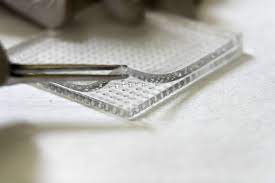
Breaking News
 Six men are making AI decisions for 8 billion people
Six men are making AI decisions for 8 billion people
 462: Del Bigtree - An Inconvenient Study -- The Way I Heard It with Mike Rowe Podcast
462: Del Bigtree - An Inconvenient Study -- The Way I Heard It with Mike Rowe Podcast
 Prepare For Coming World War, NATO Chief Says
Prepare For Coming World War, NATO Chief Says
Top Tech News
 Build a Greenhouse HEATER that Lasts 10-15 DAYS!
Build a Greenhouse HEATER that Lasts 10-15 DAYS!
 Look at the genius idea he came up with using this tank that nobody wanted
Look at the genius idea he came up with using this tank that nobody wanted
 Latest Comet 3I Atlas Anomolies Like the Impossible 600,000 Mile Long Sunward Tail
Latest Comet 3I Atlas Anomolies Like the Impossible 600,000 Mile Long Sunward Tail
 Tesla Just Opened Its Biggest Supercharger Station Ever--And It's Powered By Solar And Batteries
Tesla Just Opened Its Biggest Supercharger Station Ever--And It's Powered By Solar And Batteries
 Your body already knows how to regrow limbs. We just haven't figured out how to turn it on yet.
Your body already knows how to regrow limbs. We just haven't figured out how to turn it on yet.
 We've wiretapped the gut-brain hotline to decode signals driving disease
We've wiretapped the gut-brain hotline to decode signals driving disease
 3D-printable concrete alternative hardens in three days, not four weeks
3D-printable concrete alternative hardens in three days, not four weeks
 Could satellite-beaming planes and airships make SpaceX's Starlink obsolete?
Could satellite-beaming planes and airships make SpaceX's Starlink obsolete?
Microneedle patch penetrates biofilms to treat chronic wounds

Bacterial bioflms are made up of colonies of bacteria that stick together by building up a slimy polymer matrix. Unfortunately, topically applied antibiotics and other medications have difficulty penetrating that matrix, so they can't reach the infected tissue underneath.
As a result, doctors will often peel off the biofilms before treating the wounds. Not only is this painful to the patient, but some healthy tissue will often come off along with the biofilm, setting back the healing process. With these limitations in mind, scientists at Indiana's Purdue University have developed a biodegradable polymer composite patch with an array of tiny medication-laden "microneedle" studs on its underside.
When the patch is applied to a chronic wound, those microneedles penetrate the biofilm and absorb fluid from the tissue underneath. This causes them to harmlessly dissolve, releasing their medication into that tissue.

 Defend yourself like a pro
Defend yourself like a pro First totally synthetic human brain model has been realized
First totally synthetic human brain model has been realized Mach-23 potato gun to shoot satellites into space
Mach-23 potato gun to shoot satellites into space

